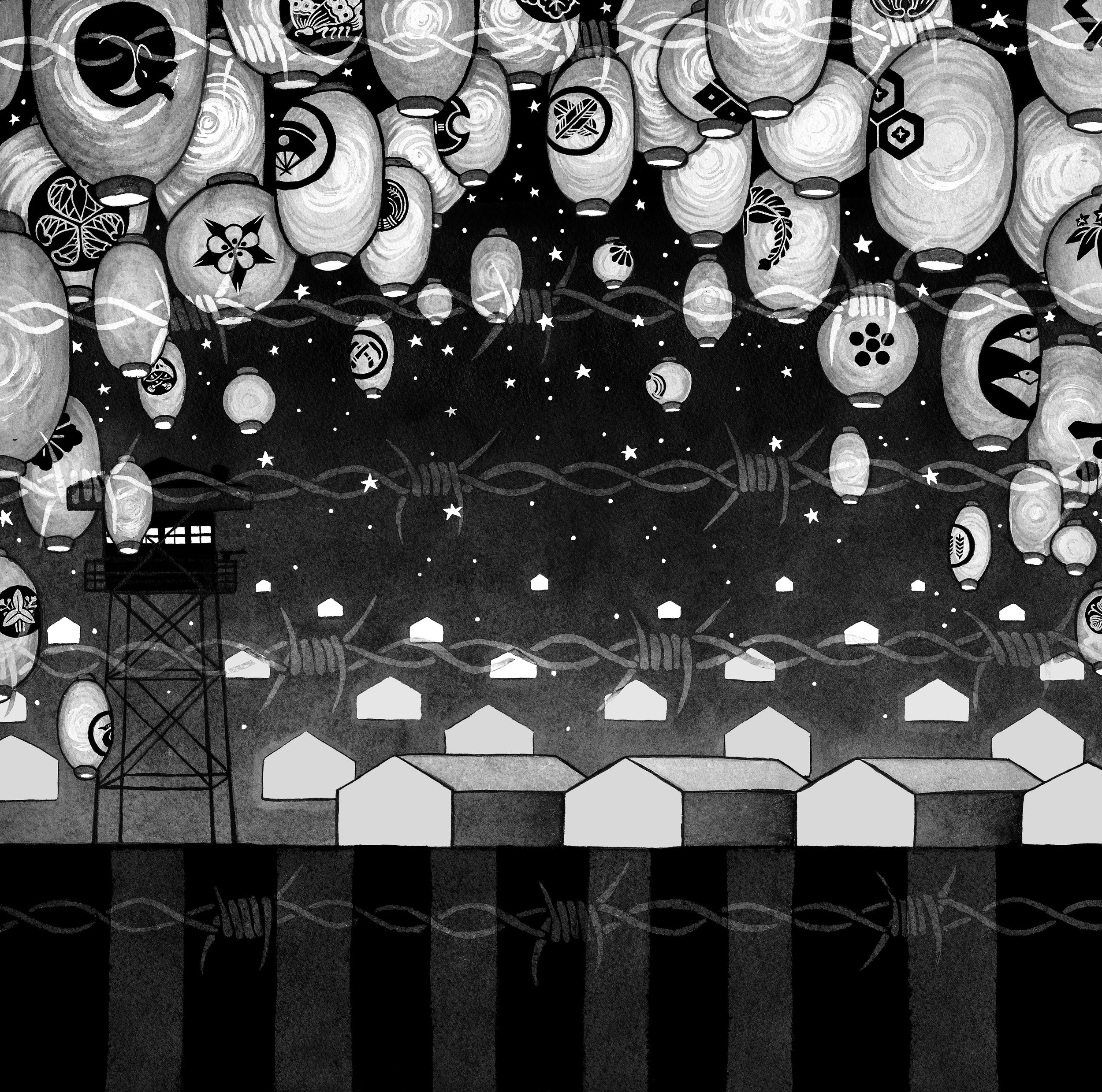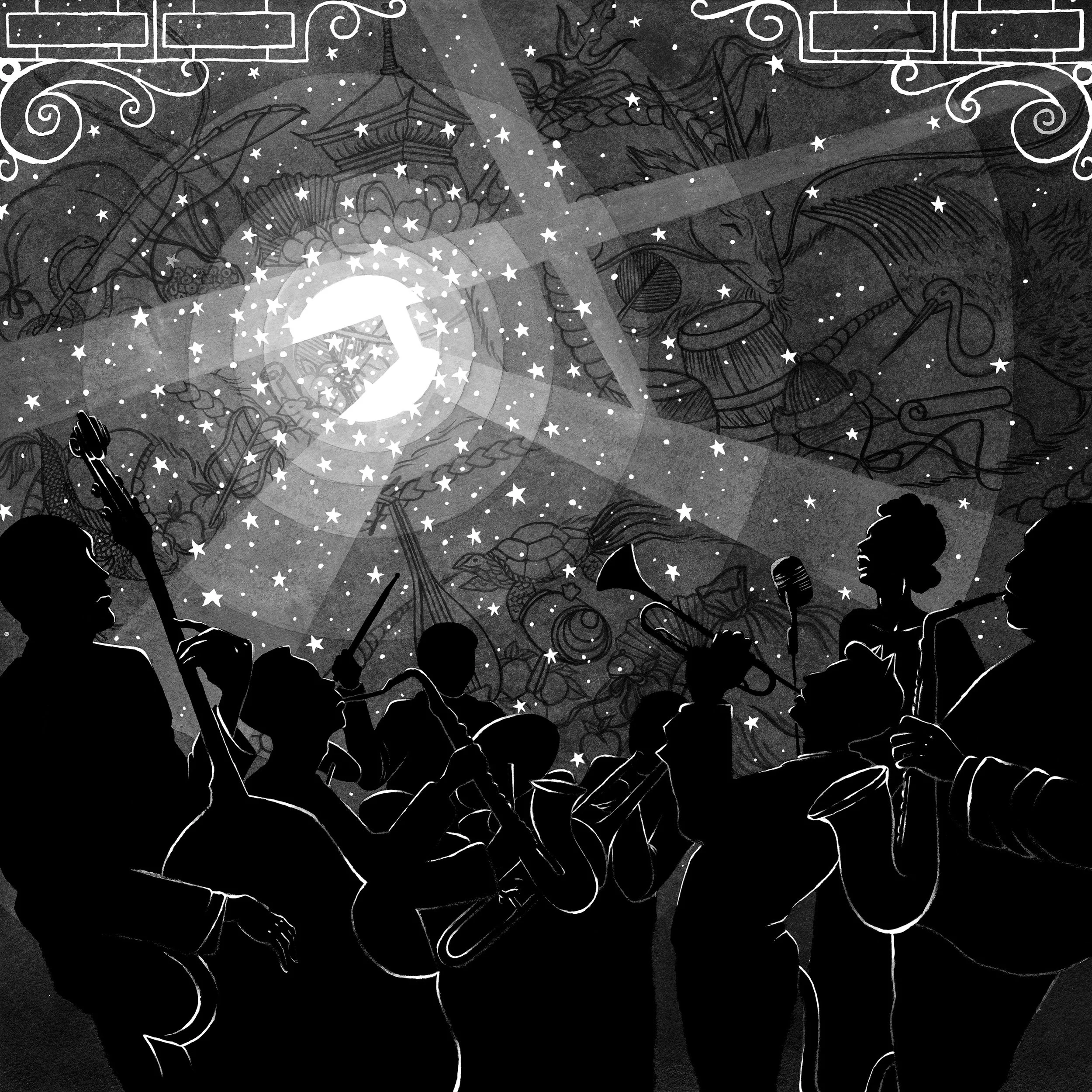2020 ZOTTOぞっと
an audio-visual-tactile driving experience produced by the Japanese Arts Network







This first iteration of ZOTTO ぞっと was an audio-visual-tactile driving experience that brought the participant into a complex and twisting narrative following our main character throughout Downtown Denver, the historic Five Points neighborhood and Capitol Hill in Colorado. Along the way, you encountered yokai, escaped obake and learned about Denver’s history. Local film, music, dance, and visual artists collaborated to craft this chilling, or 'zotto' (in Japanese), supernatural immersive and multi-sensorial journey. The immersive element was achieved through multi-sensory packets that were mailed out to audiences that included interactive elements for them to engage with during their drive and an album of downloads to guide them on their journey.
My task was to create commemorative artwork for each of the locations along the journey. Some images directly corresponded to the history and feel of the location, while others took more inspiration from the ZOTTO ぞっと storyline. Throughout the story, the audience follows a bakeneko or shapeshifting ghost cat which slowly gets revealed with each driving stop, thus the cat becomes more prominent as the illustrations progress. Additionally, each piece has a motif or compositional choice that links it to the previous image. Notes on the illustrations…
fujin
This piece portrays the Japanese god of wind, Fujin, who is often seen with his brother Raijin (god of thunder - not pictured) guarding temples. Here, Fujin ushers us onto our journey accompanied by floral motifs of Japanese symbolic significance - cherry blossoms (impermanence of life), chrysanthemums (a common funerary flower) and wisteria (the flower depicted in the Jodo Shinshu Buddhist crest). Crest—>
Memory of Light in the darkness
This illustration is a depiction of the Japanese American incarceration camps. In contrast to the ‘whoosh!’ energy of the first piece, I aimed to make the feeling of this one heavier, anchored by more repetitive imagery seen in the stars and stripes (alluding to the American flag), barracks and lanterns. The lanterns feature Japanese family crests or kamon. The title in combination with the imagery suggests ancestral strength lighting the way through a time of injustice. Stars —>
five points and seven fortunes
As this stop in the driving tour found audiences visiting The Rossonian, I wanted to evoke the feeling of a jazz club with stars, silhouettes and spotlights. Much of the visual inspiration for this piece came from Harlem Renaissance painter Aaron Douglas. The wrought iron of The Rossonian sign frames the top of the image and the spotlights actually outline the roads of Five Points, with the brightest spot at the location of the historical building. In the storyline, we highlight a time of Five Points prosperity and cultural vibrance, so I brought in the Japanese Seven Lucky Gods or Shichifukujin as the band. Symbolism associated with the gods is seen in the background. Sihouettes—>
Feral Perversion
In early iterations of the storyboarding we considered each journey for the audience to be journeying through the different realms of samsara. I kept this element as I thought it was fitting for the location. The Shorter AME Church had a historically Black congregation and was targetted a number of times by the Ku Klux Klan and had the target of arson. The Tiryag or Animal realm of samsara is noted for suffering caused by animals preying on one another and collectively suffering. I chose to depict this realm in relation to this location with vignettes of human-animal hybrids engaged in violence or suffering. The poses in the forefront are inspired by Greco-Roman sculpture while the ones in the back are taken from modern dance (influenced by the fact that the church is now the site of Cleo Parker Robinson Dance). Compositional flow—>
Hungry Ghosts
Continuing with the realms of samsara, the Hungry Ghost or Preta realm seemed fitting for Colfax Avenue given the various similarities in their discourse around cravings and attachments. Here I aimed to mimic the feeling of driving west on Colfax. Old neon signs zip along the lightning motifs, nodding to the concert venues that line the street. Silhouettes of dancers slink along the skyline as you drive towards the mountains. Meanwhile the hungry ghosts moan and grope in the background. The neon signs in the illustration correspond to their respective N-E-S-W directional coordinates. Shape of road echoed in keyhole —>
Yurei King of the Wildcatters
In this bit of the story, the audience hears the ghost story of Albert E. Humphreys who was killed at the Grant-Humphrey's mansion. This illustration is a look into his past as an oil tycoon, where he earned the title of “King of the Wildcatters.” The floral frame is taken from the architecture of the mansion itself, though I replaced the head of a lion with that of our bakeneko and we see the cherry blossoms featured again. A yurei is a ghost and in the story, we encounter the ghost of A. E. Humphreys who tells us that we are the key out of his suffering, hence, the keyhole. Floral anchoring —>
Yasuragi
In this final piece we see our bakeneko finally at peace or yasuragi and transcending to their next experience in the form of a folded crane, as audience members were asked to fold a crane with a wish or reflection written inside it and to leave it in a safe space. Because of its history as a cemetery (with largely failed attempts to exhume and relocate the bodies) Cheesman Park is currently home to over 2,000 bodies, leading to suspicions that the grounds and greenery are haunted. I chose to surround our bakeneko with the remains of others who had passed, surrounded by the same funerary flowers we saw at the beginning of our journey. Chrysanthemums —>
